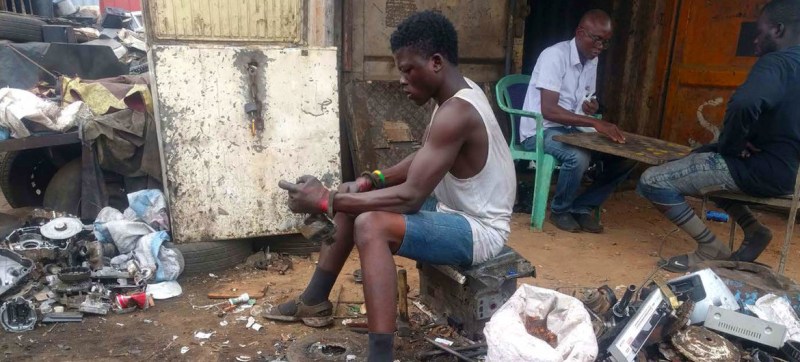 Digital Dumpsite
Digital Dumpsite ‘Digital dumpsites’ study highlights growing threat to children: UN health agency
New York: The health of children, adolescents and expectant mothers worldwide is at risk from the illegal processing of old electrical or electronic devices, the World Health Organization (WHO) said on Tuesday, in a landmark new report on the toxic threat.
In a statement coinciding with the launch, WHO Director-General Tedros Adhanom Ghebreyesus warned that the health threat was growing, in line with the “mounting ‘tsunami of e-waste’”.
"In the same way the world has rallied to protect the seas and their ecosystems from plastic and microplastic pollution, we need to rally to protect our most valuable resource –the health of our children – from the growing threat of e-waste”, he added.
A growing pile
Discarded electronic devices, or e-waste, has become the fastest growing domestic waste category in the world, according to the UN health agency.
The Global E-waste Statistics Partnership (GESP) said that of the 53.6 million tonnes produced worldwide in 2019, only 17.4 per cent was recorded as collected and appropriately recycled.
While the fate of the remaining e-waste is unknown, it is unlikely to have been managed and recycled in an environmentally-sound manner.
Hazards on the heap
While some e-waste ends up in landfills, significant amounts are often illegally shipped to low and middle-income countries where informal workers, including children and adolescents, pick through, dismantle, or use acid baths to extract valuable metals and materials from the discarded items.
WHO said that an estimated 12.9 million women who work in the informal waste sector are potentially exposing themselves and their unborn children to toxic residue.
Additionally, more than 18 million youngsters globally – and some as young as five – are said to be “actively engaged” in the wider industrial sector, of which e-waste processing is a small part.
‘Devastating’ impact
Informal methods of removing materials from e-waste have been linked to a range of health effects, especially in children, WHO said.
Recycling e-waste particularly impacts those in vital stages of physical and neurological development, with children, adolescents and pregnant women most vulnerable.
Children are more susceptible to the toxic chemicals because they absorb pollutants relative to their size and, with not-fully-developed organs, are less able than adults to eradicate harmful substances.
“Improper e-waste management is…a rising issue that many countries do not recognize yet as a health problem”, said WHO lead author, Marie-Noel Brune Drisse, warning that if action is not taken now, “its impacts will have a devastating health effect on children and lay a heavy burden on the health sector in the years to come”.
Improper e-waste management…a rising issue that many countries do not recognize yet as a health problem -- WHO
Call to action
The Children and Digital Dumpsites report delves into the multiple dimensions of the problem, to practical action that the health sector and others concerned, can take to confront the insidious health risk.
It calls for binding action by exporters, importers and governments to ensure environmentally sound disposal of e-waste and the health and safety of workers and communities.
The health sector is also being asked to reduce adverse effects from e-waste by building up capacity to diagnose, monitor and prevent toxic exposure, and to advocate for better data and health research on risks faced by informal e-waste workers.
“Children and adolescents have the right to grow and learn in a healthy environment, and exposure to electrical and electronic waste and its many toxic components unquestionably impacts that right”, said Maria Neira, WHO Director of the Department of Environment, Climate Change and Health.
“The health sector can play a role by providing leadership and advocacy, conducting research, influencing policy-makers, engaging communities, and reaching out to other sectors to demand that health concerns be made central to e-waste policies.”
Support Our Journalism
We cannot do without you.. your contribution supports unbiased journalism
IBNS is not driven by any ism- not wokeism, not racism, not skewed secularism, not hyper right-wing or left liberal ideals, nor by any hardline religious beliefs or hyper nationalism. We want to serve you good old objective news, as they are. We do not judge or preach. We let people decide for themselves. We only try to present factual and well-sourced news.







